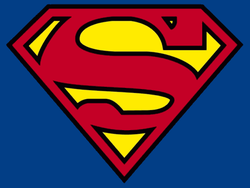
LILITH'S SOFT DISC-CLOSURE
succubus_lucid_dream_mind_doll_robot
UPGRADED
..
LAW OF ONE - RA - MAATERI - EL
.
Based upon the references that come to us from ancient legends
it does seem clear the when the gods mated with mortals,
that their offspring were men of renown, heroes who are valiant or brave.
.
RETURN OF THE HEROES
CAPTAIN AMERICA 2014
DREAMLAND PRESENTS :
THE WORSHIPFUL COMPANY OF HOLLY-WOOD GODS
AT A CINEMA NEAR YOU
.
SUPERMEN
.
According to Paiute Indian oral legends, a tribe called the Si-Te-Cah were a native American race of tall red-haired giants that once occupied the area in the distant past.
Amazingly, 9,400 year old Mummified remains were indeed found in a cave in Nevada, though scientific study is NOT allowed on the remains for political reasons.
Sarah Winnemucca Hopkins, a prominent female Native American activist,
educator, and daughter of Paiute Chief Winnemucca, related many stories
passed down in her tribe, first hand, about the Si-Te-Cah in her book
Life Among the Paiutes, published in 1883.
"My people say that the tribe we exterminated
had red hair. I have some of their hair, handed down from father to
son. I have a dress which has been in our family a great many years,
trimmed with the reddish hair. I am going to wear it some time when I
lecture. It is called a mourning dress, and no one has such a dress but
my family."
The
oldest mummies in the world are the Chinchorro mummies from northern
Chile and southern Peru. While the earliest Egyptian artificial mummy
dates to around 3000 BC, the earliest Chinchorro artificial mummy dates
to around 5050 BC. And while the earliest Egyptian natural mummy
(red-head named "Ginger") dates to around 3400 BC, the earliest
Chinchorro natural mummy dates to around 7020 BC.
The
Chinchorro culture was the only Andean culture that performed
mummification on all members of their society. In all of the other
Andean cultures, only the elite were mummified. These photographs of
Chinchorro mummies show that they have Caucasoid hair and features. This
may mean that only the Chinchorro culture consisted exclusively of
Caucasoids, and that all of the other Andean cultures were comprised of a
Caucasoid elite ruling over a Mongoloid proletariat.
"Native
Races of the Pacific States" by Hubert Bancroft, published in 1874,
Bancroft says that in Peru there were "numerous vague traditions of
settlements or nations of white, bearded men, clad in long robes, who
regulated the calendar, and were possessed of an advanced civilization".
A
major burial site of the Nazca culture was the Chauchilla Cemetery,
established in 200 AD, used for 600 to 700 years. The hair of the
mummies are obviously Caucasoid and they’re all wearing long robes. The
ceramic vessels were produced by the Moche culture (100 to 800 AD), they
all have beards, their facial features are Caucasoid, and again,
they’re all wearing long robes.
The
photograph below of the village Wari mummies, one of the many pre-Inca
peoples who inhabited the area now known as Lima in Peru. They were
directly taken from a pyramid bearing the blue-eyed masks you see in the picture. Besides the mummy wrapped in six layers of wool, needles were found and other textile materials.
All
over the New World we find legends of Quetzalcoatl (by Aztecs),
Kukulkan (by Mayans), Amalivaka (by Tamanacs), Manco-Capac (by Incans),
Viracocha (by Aymaras). All of them describe: a tall white man, blue eyed,
with long blond-reddish hair and beard. Numerous PRE-HISPANIC Caucasian
mummies have been found in South America with fair hair, some with blue
stones covering the eyes, as well as gold masks with similar striking
blue eyes, matching the legends of the pale-skinned Sun-gods.
Two thousand years ago a mysterious and little known civilization, with a blue-eyed
elite, ruled the northern coast of Peru. Its people were called the
Moche. They built huge pyramids that still dominate the surrounding
countryside; some well over a hundred feet tall. The Lord of Sipán
tomb is held by some archaeologists to be one of the most important
archaeological discoveries in this region of the world in the last 30
years, as the main tomb was found intact and untouched by thieves.
Pizarro asked who the white skinned redheads were. The Inca Indians replied that they were the last descendants of the Viracochas.
The Viracochas, they said, were a divine race of white men with beards.
They were so like the Spanish that the Europeans were called Viracochas
the moment they came to the Inca Empire. The Incas thought they were
the Viracochas who had come sailing back across the Pacific. (Heyerdahl,
ibid., page 253).
According
to the principal Inca legend, before the reign of the first Inca, the
sun-god, Con-Ticci Viracocha, had taken leave of his kingdom in present
day Peru and sailed off into the Pacific with all his subjects.
When
the Spaniards came to Lake Titicaca, up in the Andes, they found the
mightiest ruins in all South America - Tiahuanaco. They saw a hill
reshaped by man into a stepped pyramid, classical masonry of enormous
blocks, beautifully dressed and fitted together, and numerous large
statues in human form.
They
asked the Indians to tell them who had left these enormous ruins. The
well known chronicler, Cieza de Leon, was told in reply that these
things had been made long before the Incas came to power. They were made
by white and bearded men like the Spaniards themselves. (Heyerdahl,
ibid., page 253).
The
White men had finally abandoned their statues and gone with the leader,
Con-Ticci Viracocha, first up to Cuzco, and then down to the Pacific.
They were given the Inca name of Viracocha, or "sea foam', and vanished over the sea.
Archeologists have discovered a lost city deep
within the Amazon rain forest of the long-lost tribe of white-skinned,
blonde-haired people called the Cloud People. The Cloud People, also
known in legend as “the white warriors of the clouds” established
expansive pre-Inca kingdom located in the northern regions of the Andes
in present-day Peru. Other pre-Hispanic groups referred to the Cloud People...
as “White Gods” due to their height, blonde hair and blue eyes.
According to Inca legend, the Chachapoyas remembered that their
ancestors came from the East.
Aztec
codices are books written by pre-Columbian and colonial-era Aztecs.
Note that the giant pictured below has a name near him, the text reads
Quinametzin, one of the old ones.












No comments:
Post a Comment